Tips on which trees to plant, when, and how — to attract deer and keep them coming back
Mention planting for deer, and most hunters automatically assume you are talking about food plots. There is no doubt that a nice food plot will attract and hold deer in an area. But planting trees and shrubs can also be an excellent way to improve the hunting on your property, whether you own, lease, or hunt by permission.
I checked with Kentucky Department of Fish and Wildlife biologist Joe Lacefield and USFWS wildlife biologist Brad Pendley to get their top picks for wildlife-friendly trees. Unlike annual or semiannual food plots like beans, clover, or alfalfa, trees and shrubs are a long-term project. How long? It depends on what you plant.
(Don't Miss: 8 Things Land Managers Should be Doing Right Now)
Short-term plantings consist of small trees and large shrubs that begin to provide fruit or forage in the years immediately after planting. Some plants start to produce a year or two after planting, whereas others will take as long as 10 to 15 years.
Unlike the soft mast and fruit production of those short-term plantings, long-term trees take longer to mature, often as many as 15 to 20 years, but will produce regularly for years to come after they start. The good thing about those long-term plants is that they will still be around to bring deer in for your grandchildren.
(Don't Miss: The Ultimate Deer Hunting Property)
Tree-Planting Tips
- Plant trees in the fall. This gives them all winter and spring to develop roots before the hot and dry summer.
- Water during dry times in the first year. It takes a while for a tree's root system to grow adequately to keep it nourished during dry periods.
- Plant in direct sunlight. Trees grow best when they receive light from above. Avoid planting in existing timber or thickets unless you clear an area around the new tree.
- Remove existing vegetation from the area around the tree. Existing vegetation has a jump on your tree seedlings when it comes to root development. They will pull any available nutrients and water from the soil before your tree can use it.
- Don't fertilize right away. Tree seedlings contain everything they need to grow for at least six months. Overfertilizing can burn the tender roots and encourages vegetation growth around the tree.
- Protect the seedlings. Rabbits, deer, and other wildlife love tender seedlings. Protect them with tree tubes whenever possible. As your young tree grows, Lacefield says you can protect it from bucks that might want to rub their antlers on it by driving rebar posts next to the trunk or by hanging a few pie pans from the branches. Bucks don't like the feel of the rebar on their antlers, and the clanging metal spooks them.
- Fertilize once your trees start to mature. Regular fertilization after the tree is a year or more old encourages growth and speeds mast production.
(Don't Miss: How to Build a Big Buck Bedding Area)
Editor's Note: This was originally published on Aug. 23, 2017.
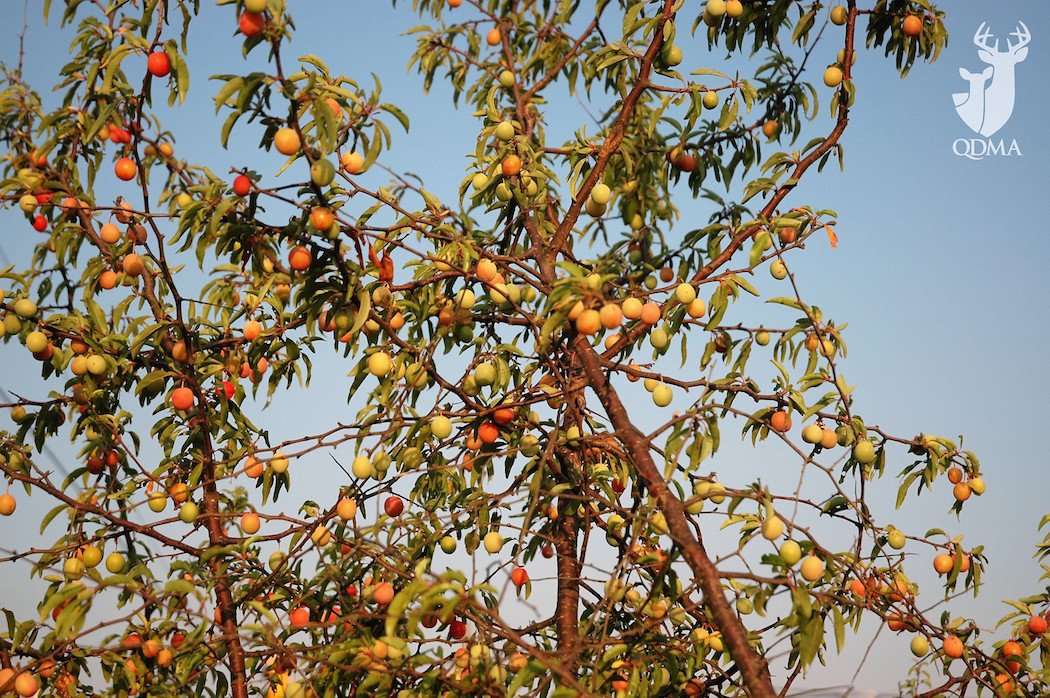
(Prunus americana)
American plum trees serve two purposes in the deer woods. This low-growing, multistemmed tree reaches 15 to 25 feet tall and forms great cover when feathering an edge from mature woodlots to food plots or open fields.
Besides offering good cover, the American plum has outstanding forage value for deer. The small, oval leaves are about 86% digestible to most herbivores. In addition to the leaf forage, wild plums produce a heavy fruit load most years that is extremely attractive to deer and other wildlife when it ripens in early to midsummer.
Image by QDMA
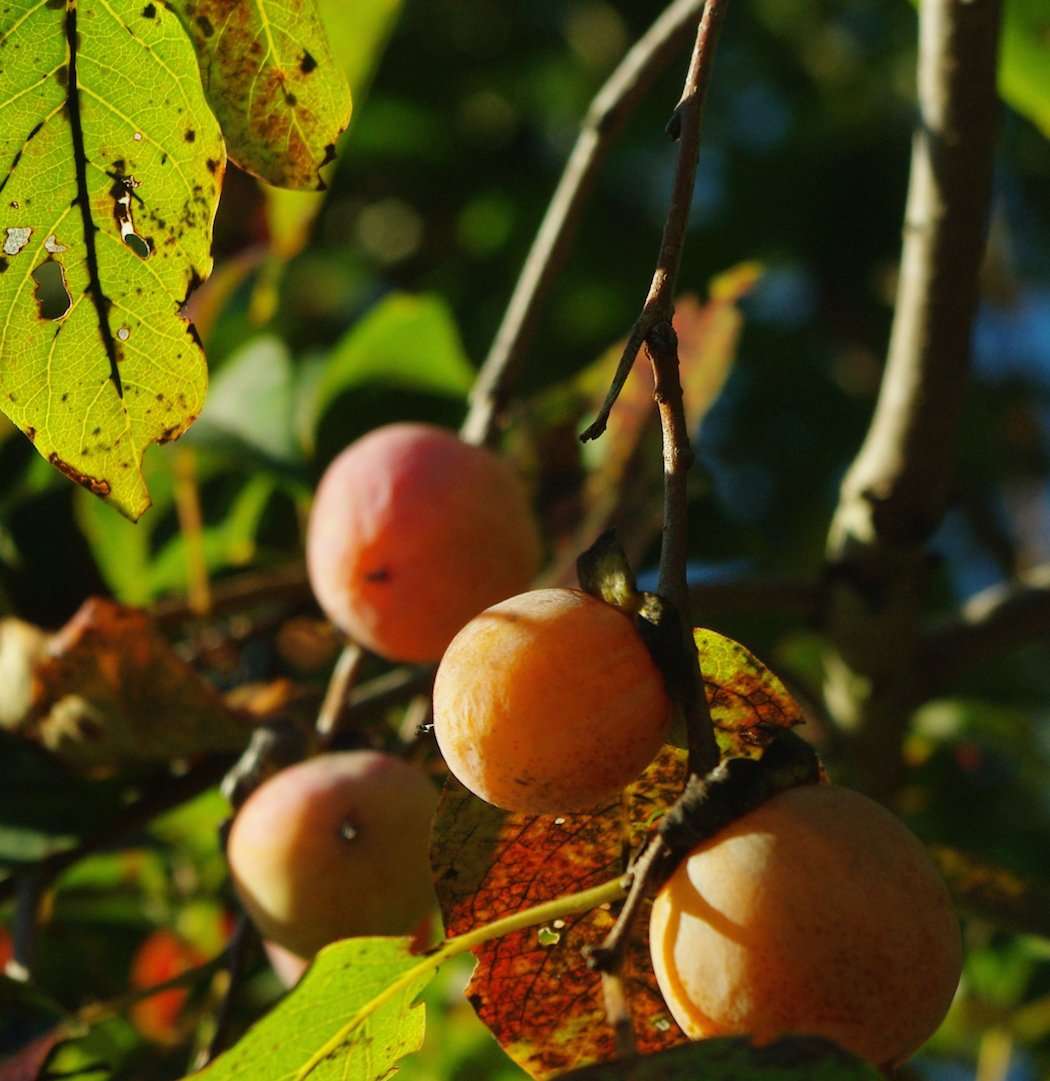
(Diospyros virginiana)
Similar in size to the wild plum, persimmon trees also provide both browse and edge cover. But the fruit is where this one really shines. Deer, and just about every other animal in the woods, love ripe persimmons. Unlike the summer-ripening plum, persimmons ripen in the heart of deer season, providing a huntable food source that is irresistible to every deer in the area.
Watch them closely as the nighttime temperatures drop near the freezing mark. You can bet the deer in your area are doing the same. Ripe persimmon fruit doesn't last long in the woods, so hunt them as soon as you see them start hitting the ground.
Image by Albert Herring / Virginia State Parks
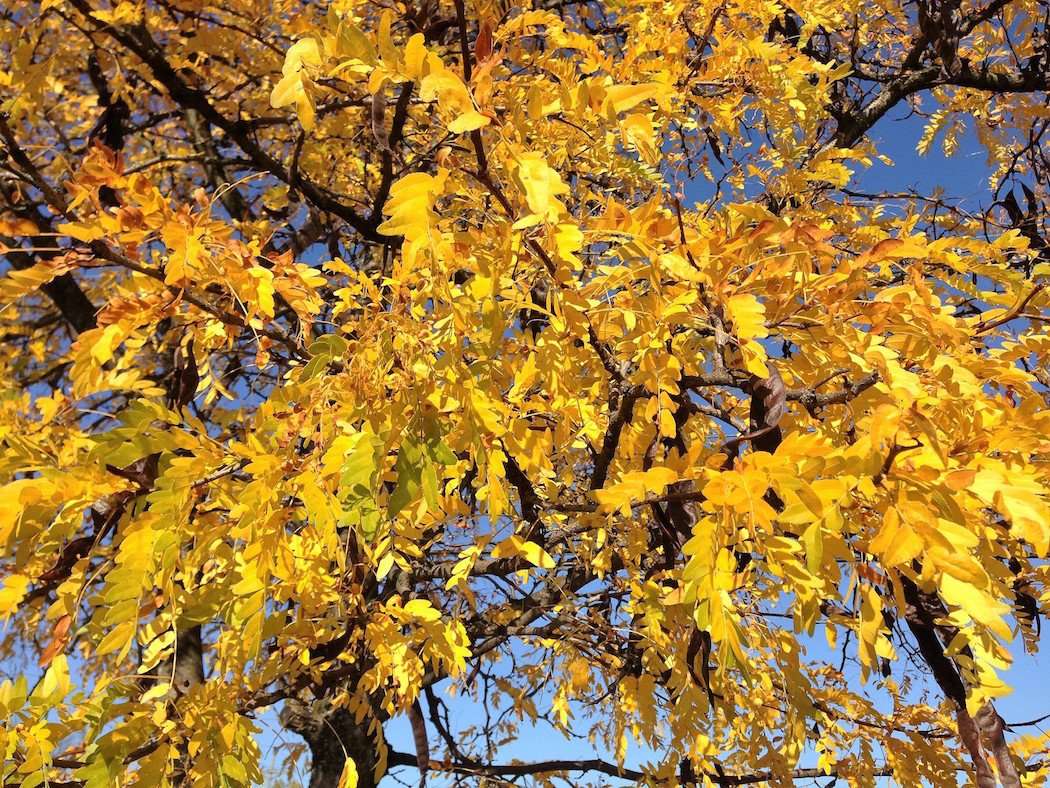
(Gleditsia triacanthos)
Another similar-sized tree, the honey locust offers both browse in the form of spring leaves, as well as a sweet-tasting seedpod that deer enjoy in the fall and winter. Honey locusts grow well along edge habitat, making them perfect for transitional cover.
Image by Famartin
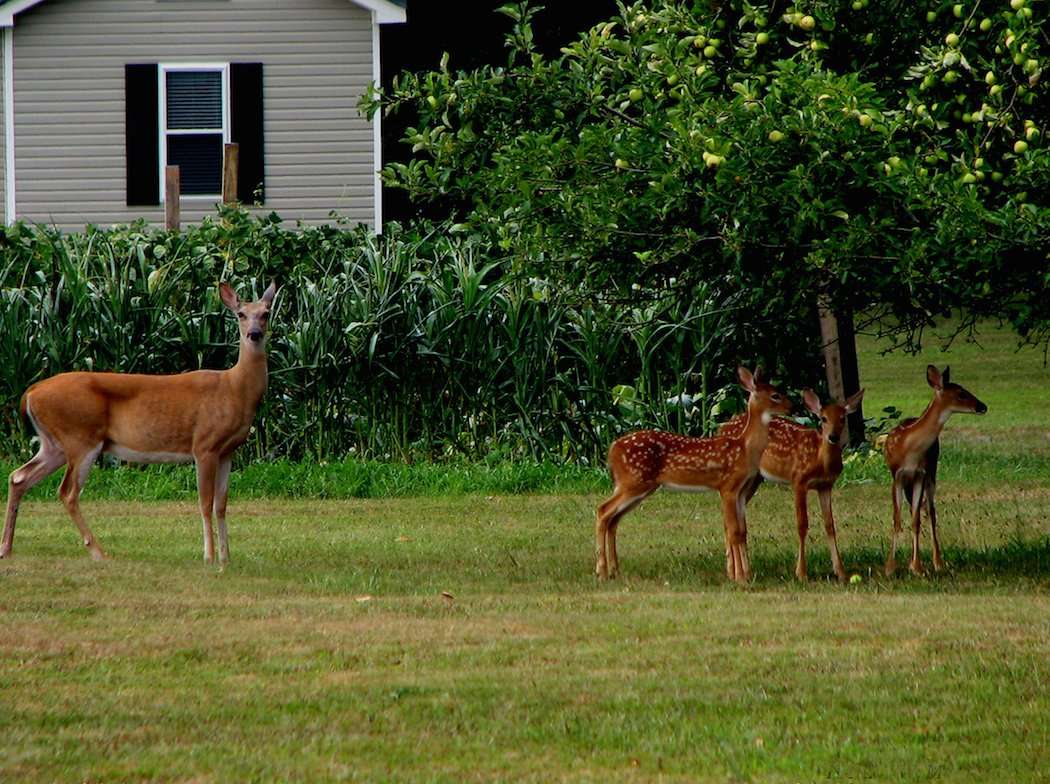
A well-maintained orchard can produce over 10 tons of highly attractive deer food per year. And that food comes on during the peak of hunting season. For top results, look for hybrid varieties that will handle stress and neglect better than nonhybrids. Modern hybrids also produce more poundage of fruit per tree. Make sure to plant multiple varieties in close proximity for best pollination results. Your seedling supplier should have a list of the best cross pollinators for each variety.
Image by Teaberry Eagle
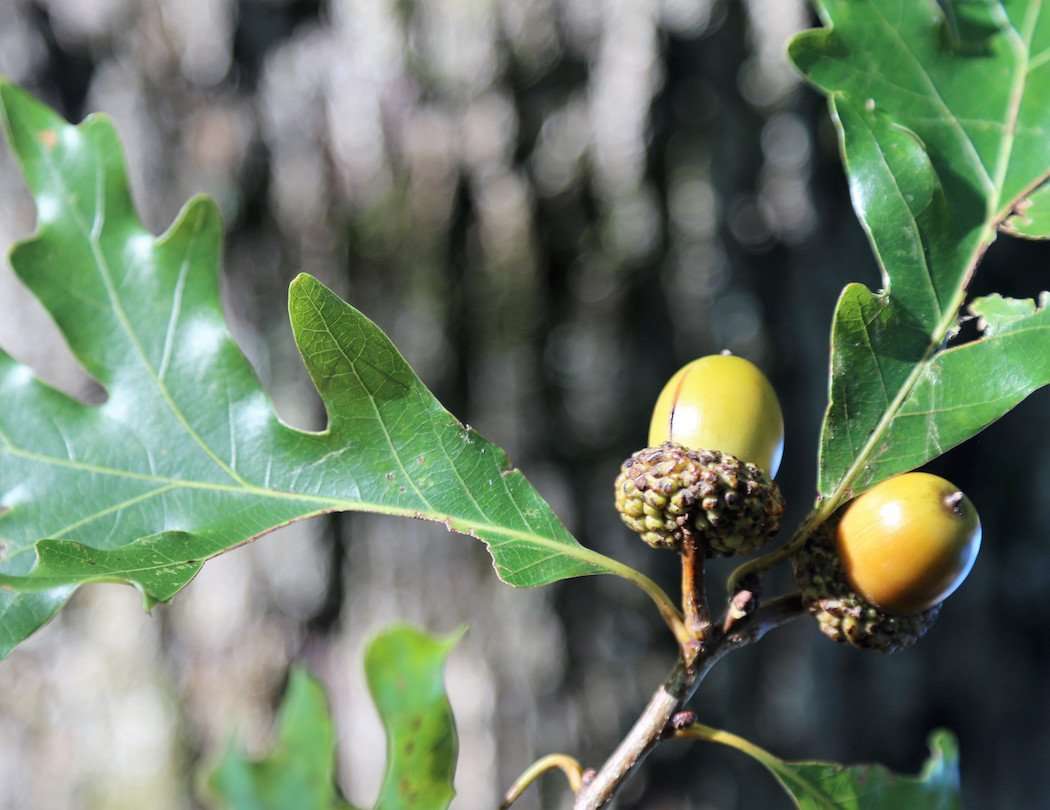
(Quercus alba)
Deer prefer white oak acorns over red due to their less acidic nature and sweeter flavor. White oak acorns mature in about six months, so they produce every year. Popular white oak species include white, swamp white, overcup, bur, swamp chestnut, chestnut, chinkapin (in the Midwest), and live and post oak (in the South). Plant multiple varieties so that acorn drop will be consistent throughout the fall.
Image by DCRJSR
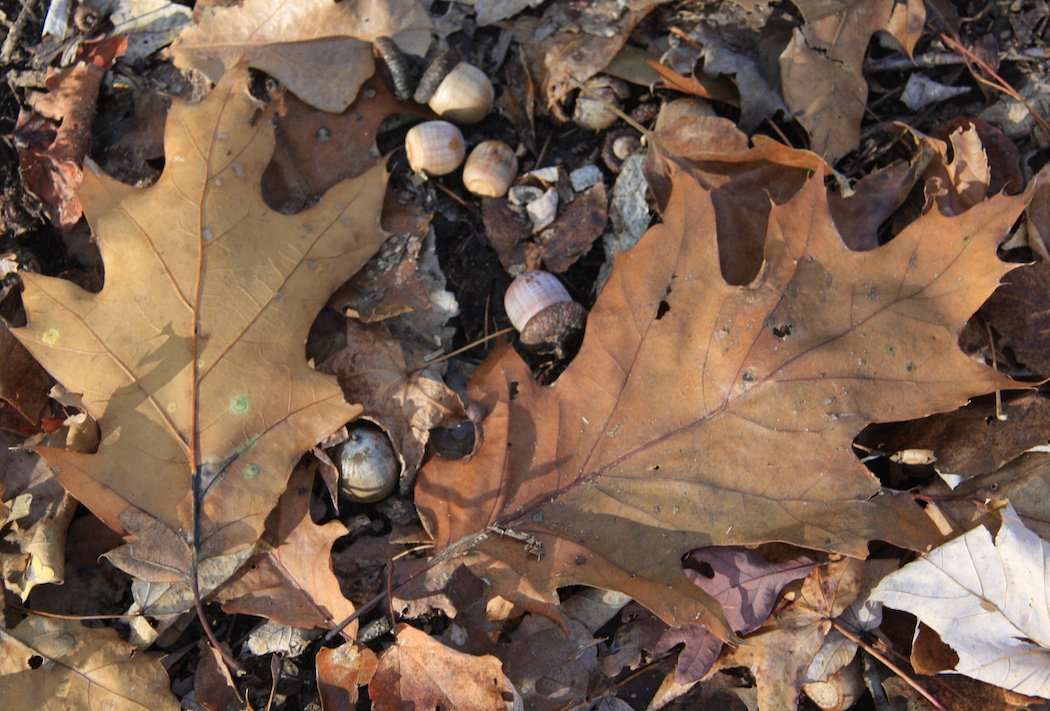
(Quercus rubra)
Because white oak acorns have less tannic acid and a sweeter flavor, they are normally eaten soon after hitting the ground. Since red oak acorns are less palatable, they often remain on the ground far longer. Red oak acorns can be an important food source long after the white oaks are gone. Planting red oaks on your property ensures a late-season food source during the time of year deer often need it the most. As with white oaks, planting multiple varieties makes for a longer and more consistent acorn drop each fall.
Image by Michael Pendley
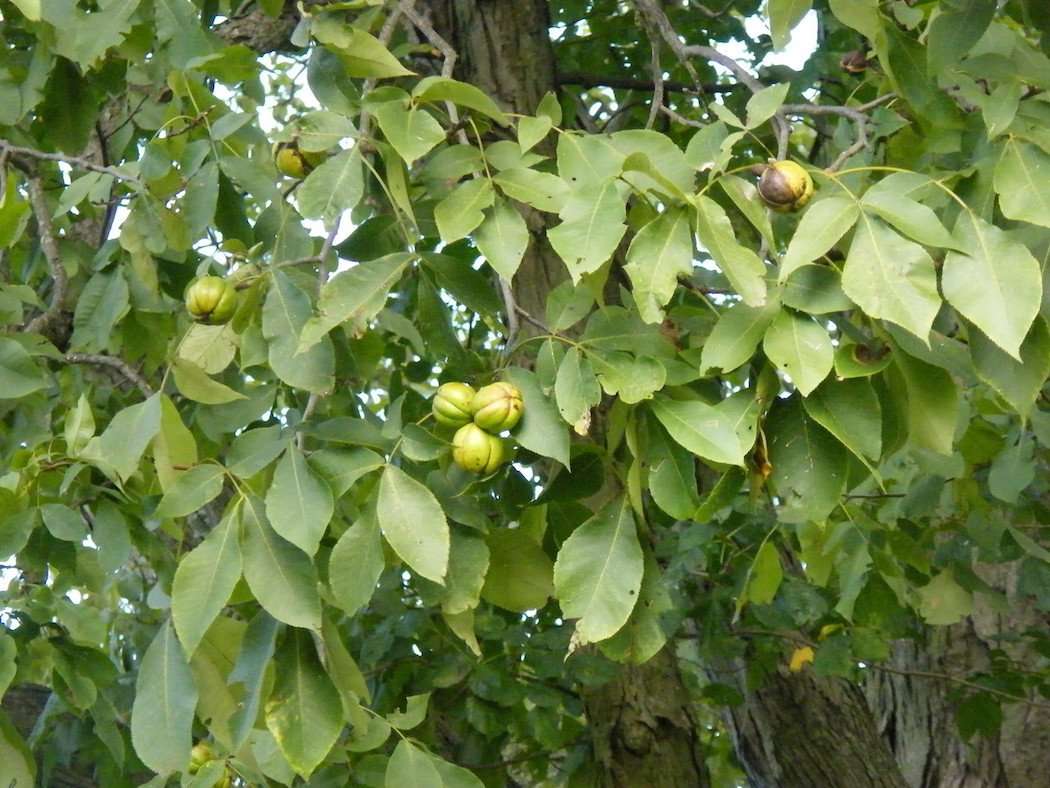
While they don't receive the press that acorns do, hickory and pecan mast is very attractive to deer. A bonus with both of these trees is their more consistent mast production from year to year. Hickories do better in northern climates, while pecans thrive in the lower Midwest and South.
Image by P. Fugglestein
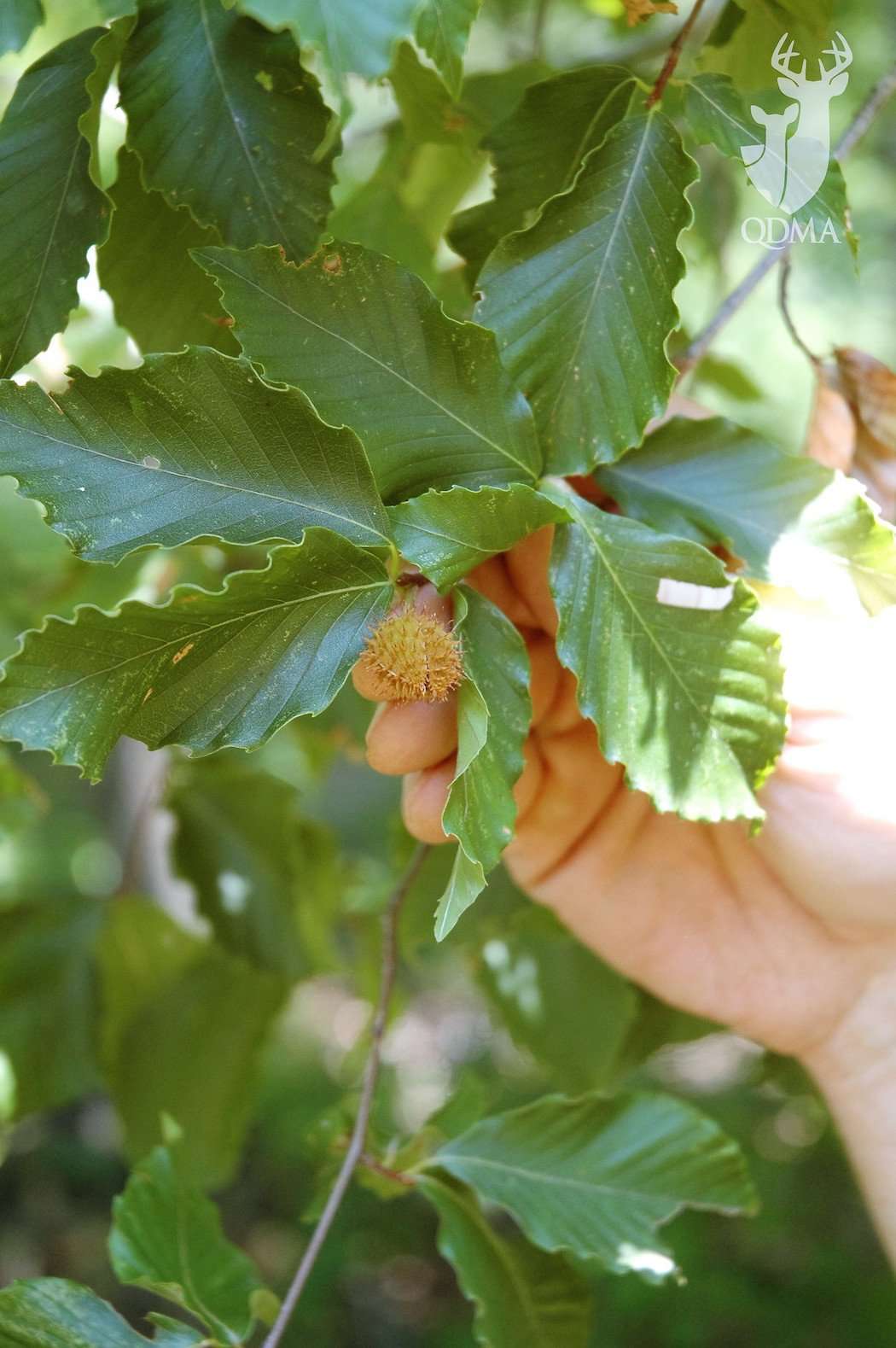
(Fagus grandifolia)
The American beech once covered most of the eastern United States. Heavy logging for timber thinned these trees considerably, but they are making a comeback. The beech is not without its drawbacks. They take a long time, up to 30 years, to start producing heavy mast. Once they do start producing mast, they are fairly inconsistent from one year to the next. The good thing about the American beech is that, every third or fourth year, they will produce a bumper crop of small nuts that every animal in the woods, including deer, will consume. On those heavy mast years, there is no better place to be than under a stand of beech trees.
Image by QDMA
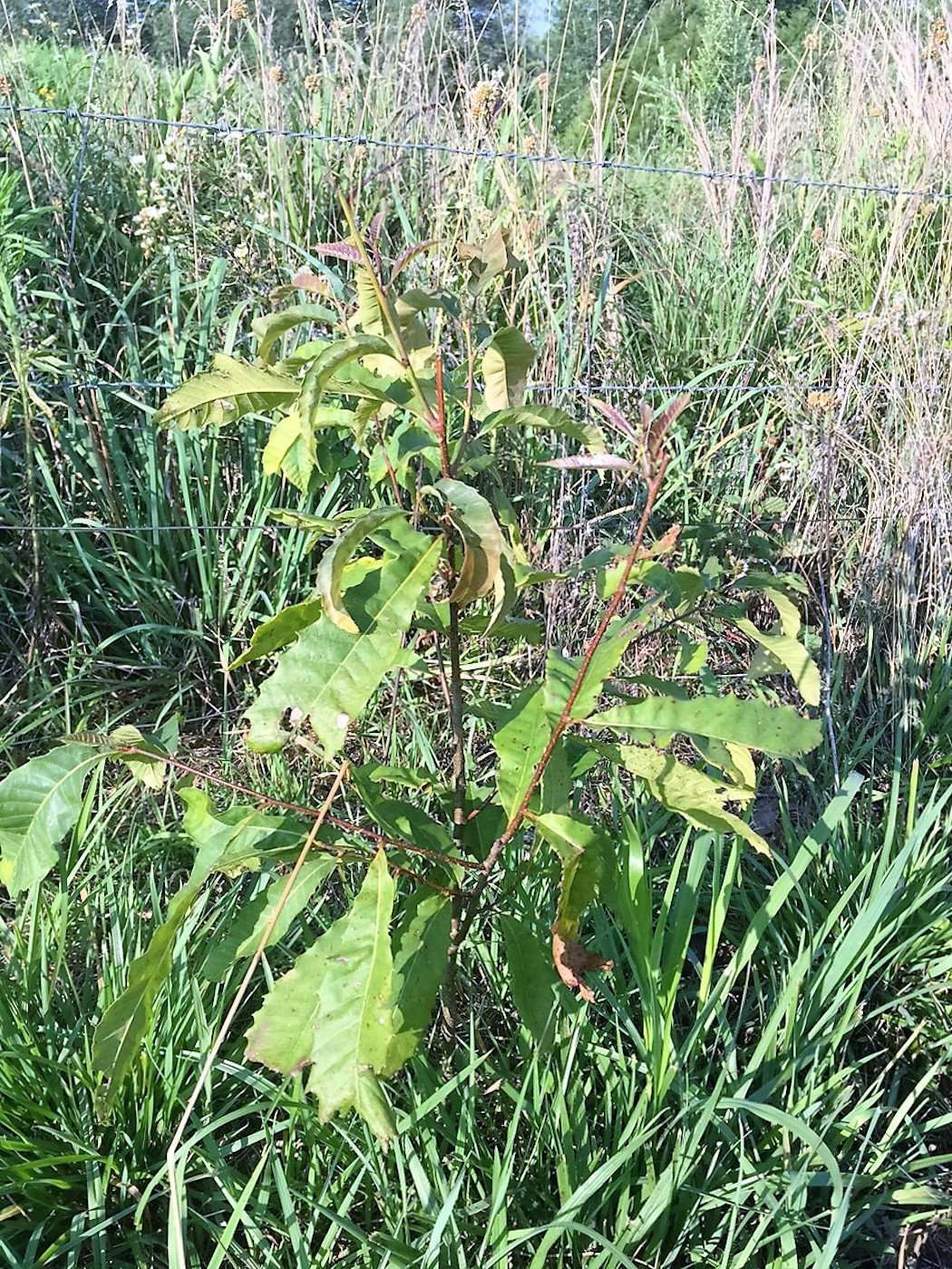
(Castanea dentata X mollissima)
When the first Europeans set foot on this continent, the American chestnut reigned supreme as a mast production tree. Not only did it blanket the eastern U.S., but it produced heavy crops of mast reliably from year to year and the nuts were highly palatable to man and animals alike.
Then, in 1904, a single tree carrying a blight that would devastate the chestnut forests was imported into New York. By 1950, nearly every chestnut in the country was dead. Luckily, a single seemingly blight-resistant tree was discovered. From that tree, the chestnuts were brought back from the brink of extinction.
Named the Dunstan chestnut after one of the team that brought it back, this new chestnut has proven resistant to blight. It has also proven to be one of if not the best trees to plant for wildlife, deer included. Dr. James Kroll has conducted trials in which he discovered that deer choose chestnuts over acorns at a rate as high as 100 to 1.
Besides being highly attractive to deer, Dunstan chestnuts can start producing mast in as soon as three to five years.
Image by John Goodin
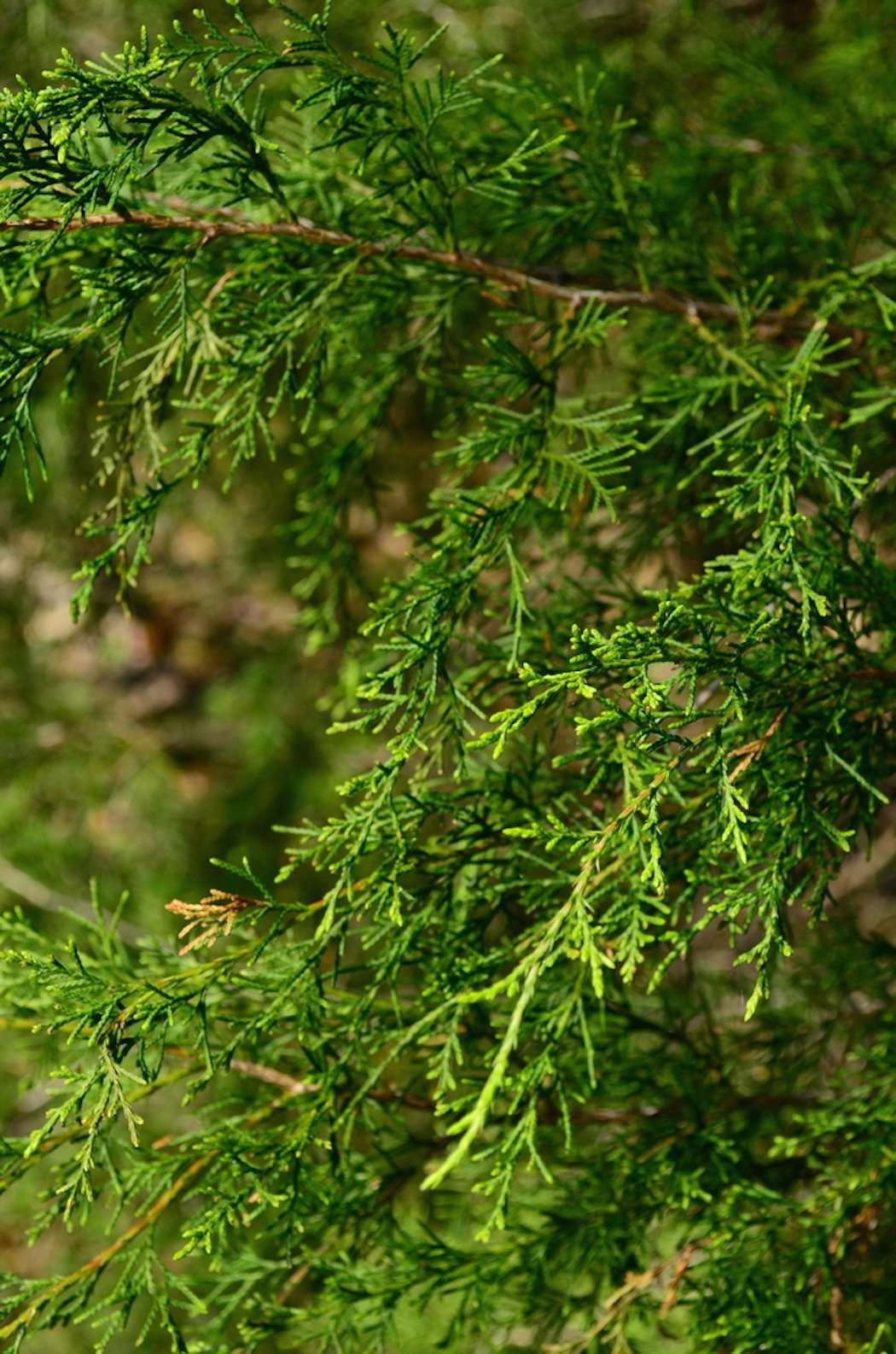
(Juniperus virginiana)
While the other trees in this article are appreciated mostly for their food value, the Eastern red cedar shines as a cover plant. Without adequate cover, deer won't make regular use of an area no matter how many food sources are present. Plant cedar in dense pockets near food sources to provide cover both during the season and during harsh winter months when the herd needs protection from the elements.
Image by Philip Silver / Shutterstock
Check out more of our stories, videos, and how-to advice on deer hunting and land management.











